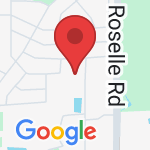Decorative & Stamped Concrete, Schaumburg IL
Decorative concrete technique called stamped concrete imitates the appearance of other materials like brick, stone, tile, and wood. It is made by pressing newly poured concrete using rubber stamps to provide the surface texture and pattern. Before stamping, the concrete is tinted and roughened to achieve the desired effect. For example, stamped concrete can be utilized for pool decks, driveways, walks, and patios. It is a well-liked solution due to its robustness, ease of maintenance, and variety of design options. It can also be a more affordable substitute for more expensive materials while still producing a similar look.
Stamped cement is a type of decorative concrete that mimics the appearance of other materials such as brick, stone, slate, or wood.
The process involves pouring a slab and impressing a pattern or texture onto the surface using specially designed stamps.
The stamps are made of flexible materials, such as rubber or polyurethane, and are imprinted onto the surface of the landscape.
The cement is often colored before stamping to achieve a more realistic look.
Stamped concrete is used for a variety of applications such as patios, driveways, walkways, pool decks, and even interior flooring.
It is a popular choice for its durability, low maintenance, and versatility in design options.
Stamped concrete can be a cost-effective alternative to more expensive materials while still achieving a similar look.
Stamped Concrete FAQs
How much does stamped concrete cost?
The size and complexity of the project, the kind of stamping pattern and color, and the location of the property are some of the variables that can affect the cost of stamped concrete. Here are some broad recommendations for stamped concrete pricing:
Basic stamped concrete: The price for a simple stamped concrete project with one color and a single design is from $8 to $12 per square foot.
Mid-range stamped concrete: An intricate project with many designs and colors might run you between $12 and $22 per square foot.
High-end stamped concrete: A high-end stamped concrete project can cost $18 to $35 per square foot or more and has elaborate designs and many colors.
It's crucial to keep in mind that these are only rough estimates, and the final price may change depending on the project at hand. The quality of the materials used, the skill of the contractor, and any additional features like decorative borders or saw-cutting can all have an impact on the price. Overall, stamped concrete can cost more than regular concrete, but it delivers a distinctive surface that can improve a building's appearance. When weighing the cost of stamped concrete, homeowners should take the material's long lifespan and other advantages into account.
Can you stamp a concrete driveway?
Yes of course! concrete driveways can be stamped/pressed and actually is a very popular option among homeowners who wish to improve the curb appearance of their home and make a strong, long-lasting surface. The strength and durability of cement can be used in conjunction with the stamped concrete to create a look that resembles more conventional building materials like brick, stone, or cobblestone. This makes it the perfect material for driveways because it can handle considerable traffic from both vehicles and people without becoming damaged. Additionally, stamped concrete driveways can be personalized with various hues and patterns, giving homeowners the chance to design a distinctive appearance that ties in with the design and architecture of their house.
How is stamped concrete created?
Before the installation of stamped concrete, the selected area undergoes site preparation. This entails clearing off any vegetation or debris, leveling the ground, and ensuring effective drainage.
During construction, formwork is created to secure the wet concrete in place as it solidifies. The formwork material can be wood, plastic, or metal and is usually secured with stakes or braces.
To create a sturdy foundation, cement is mixed either in a truck-mounted mixer or a portable mixer at the job site. Once mixed, it is poured onto the surface and evenly spread using shovels, rakes, or trowels.
After the pour, it can be enhanced with color and texture. Color hardeners, stains, or dyes can be added to the surface to achieve a desired color. To create a pattern or texture, stamped concrete texture mats or stamps are pressed into the wet cement.
After stamping, the wet cement needs to cure for a few days without any interference from rain, extreme temperatures, or any other factors that may affect the process. When it's completely cured, a sealer is applied to safeguard the surface from stains, water damage, and UV rays.
What colors and patterns are available for stamped concrete?
A variety of customizing choices are available with stamped options to complement the style and feel of any property. Your landscape can be tinted with pigments or dyes to match the surroundings or to produce a distinctive appearance. Brown, beige, gray, red, and tan are common colors, with a variety of color combinations and modifications available to suit personal preferences. It is possible to create stamped concrete designs that imitate natural materials like brick, stone, slate, tile, and wood. Ashlar stone, cobblestone, herringbone, running bond, and wood plank are examples of common patterns. These designs can be employed to enhance a modern aesthetic or to give off a rustic or natural appearance.
Schaumburg IL Concrete Driveway Construction
(Covering The All Nearby Areas)
Driveways
Patios
Walkways
Slabs
& More
Call or text and we will get back to you in record time.

